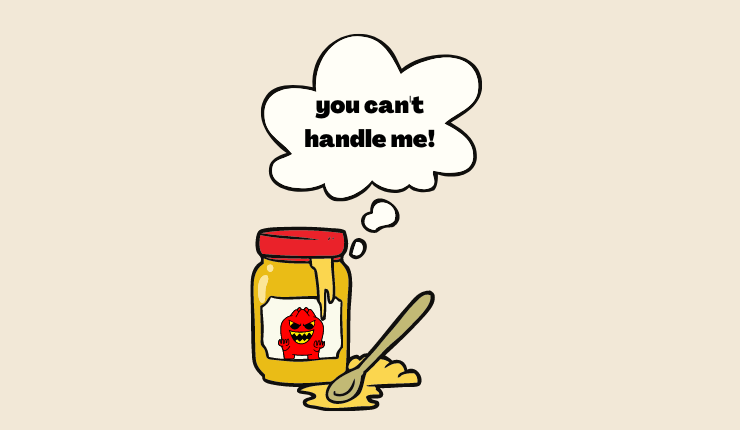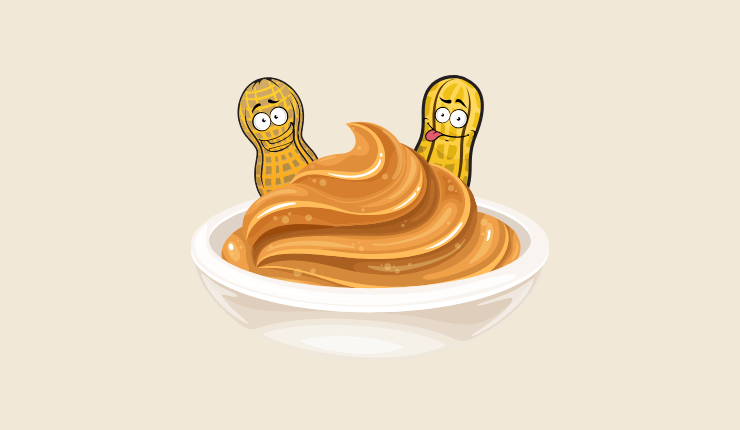Peanut butter is my absolute favorite spread. If you were to go through my pantry, you would find both creamy and crunchy products.
What I do not love is that watery mixture on top of my peanut butter. “Why is my peanut butter watery?” was always my first thought.
There are several reasons why I wanted to research this watery spread. I wanted to ensure my spread was still safe to eat, and I wanted to find out if I could fix my spread to avoid a potential mess.
Can you imagine spilling the watery mixture on yourself? I often snack while watching television, so that would not have been a fun situation.
I was so excited to lay down in bed and eat my peanut butter, but when I opened it it was watery and spilled all over me and my bed. I literally showered right before that too 🙃 to say that I am devastated is an understatement
— Will Estrada (@will_estrada21) September 21, 2021
Of course, I wanted to put together a guide to help others before they wound up discarding their favorite spread.
I always take my time to research a topic, and the topic of watery peanut butter is no exception. My research consisted of forums, websites, blogs and videos because I wanted to find as much information as possible.
After reading my guide on watery peanut butter, you will know:
- The reason for the watery mixture on top of your spread.
- How to thicken your spread properly.
- Whether it is safe to eat the watery spread.
- How to store your natural and conventional spread.
- How to keep your spread from getting watery.
Did you know it takes a few hundred peanuts to make peanut butter? To quote the National Peanut Board,
It takes about 540 peanuts to make a 12-ounce jar of peanut butter.
You can learn more about this tasty spread, why it gets watery and how to thicken it in my guide.
Table of Contents
- 1. What Is the Water on Top of the Peanut Butter? →
- 2. Why There Is a Pool of Oil on Top of Peanut Butter →
- 3. Does Natural Peanut Butter Get Watery? →
- 4. Difference Between Natural and Conventional Peanut Butter →
- 5. Is ‘Natural’ Peanut Butter Actually Better? →
- 6. How to Store Natural and Conventional Peanut Butter →
- 7. How to Store Natural Peanut Butter with Oil That Sits on Top →
- 8. What Is the Expiration Date of Peanut Butter? →
- 9. How Do I Know if The Peanut Butter Has Gone Bad? →
- 10. Why Is My Peanut Butter Watery: How to Fix That Watery Spread →
- 10.1. Stir the Oil and Butter →
- 10.2. Place It in the Refrigerator →
- 10.3. Store It Butter Upside-Down →
- 10.4. Pour Out the Oil →
- 10.5. Why You Should Not Pour Out the Oil →
- 10.6. Add Some Ground Peanuts →
- 10.7. Add In Some Oil →
- 10.8. Add Some Xanthan Gum →
- 10.9. Homemade Peanut Butter? Shorten the Grinding Time →
- 10.10. Use an Immersion Blender →
- 11. How to Keep Your Spread From Going Watery →
- 12. What Kind of Spread Is Less Watery? →
- 13. Hydrogenated Oil in Your Spread →
- 14. You Can Still Use Watery Peanut Butter →
- 15. Can I Make Peanut Butter at Home From Scratch? →
- 16. What is the Difference Between Homemade and Store-Bought Spread? →
- 17. Useful Resources →
Why Is My Peanut Butter Watery? A Guide on How to Fix Your Watery Spread
You may wonder if you need to toss out your spread after asking yourself, “Why is my peanut butter watery?”
The good news is that you do not need to toss out your watery peanut butter. My guide can help you identify the watery mixture and how to fix it.
What Is the Water on Top of the Peanut Butter?
Let’s start by identifying that watery mixture on top of your spread. I have found that the mixture is actually peanut oil.
When peanuts are crushed to make the spread, the natural oils leak out of the peanuts. After your spread has been opened and on the shelf for a while, the oil separates from the rest of the ingredients.
According to FoodandFizz,
The weight of oil is very light so it tends to float on other ingredients as it does with water.
Why There Is a Pool of Oil on Top of Peanut Butter
In this video, Tech Insider shares the reason for the oil at the top of your spread. You can also learn how to thicken your spread without pouring out the oil.
Does Natural Peanut Butter Get Watery?
You may be wondering if natural peanut butter gets watery.
All natural peanut butter:
50% watery brown oil on top.
1% peanut butter in the centre.
49% hard brown brick-like clump at the bottom.— Andrew Hunt (@AndrewHunt311) July 23, 2017
There are many natural peanut butter products that do not contain any stabilizers, hydrogenated oils or preservatives.
These ingredients are used in commercial spreads to keep the oil and ingredients from separating. Of course, the ingredients in commercial spreads do separate at times.
Therefore, it is possible for your natural peanut butter to get watery.
Difference Between Natural and Conventional Peanut Butter
It never hurts to learn the difference between natural and conventional peanut butter, especially if you are trying to determine the right product for you.
You know by now that natural spreads do not contain any stabilizers, hydrogenated oils or preservatives. However, these ingredients are found in conventional spreads.
A natural spread has a more grainy appearance than a conventional spread. In addition, a conventional spread remains the same regardless of the temperature, while a natural spread is harder to use after it has been refrigerated.
Is ‘Natural’ Peanut Butter Actually Better?
You can learn the meaning of “natural” in regard to peanut butter in this video. In addition, The Atlantic determines if a natural spread is the better option.
It is always interesting to learn the differences between similar food. For example, you can learn the difference between ham hock and pork hock in this article.
How to Store Natural and Conventional Peanut Butter
I think it is important to learn how to store your natural and conventional spreads. The last thing you want is for your spread to separate or expire because it was not stored properly.
It is best to store your natural spread upside-down in the refrigerator. When stored upside-down, the peanut oil mixes back into the butter. This means you do not have to stir the natural spread.
The best way to store your conventional spread after opening is in the pantry for up to three months. After three months, you can store it in the refrigerator for another three or four months to maintain its quality.
How to Store Natural Peanut Butter with Oil That Sits on Top
What can you do if the oil and ingredients in your natural spread separate? According to DIY Pinto, you can store the spread upside-down in your refrigerator.
What Is the Expiration Date of Peanut Butter?
“Why is my peanut butter watery?” is not the only question you may be asking about your spread. You may also wonder about the expiration date of your spread.
It is not uncommon to keep the same spread for several weeks or months. However, it is important to find out when your spread expires to avoid consuming anything that is no longer edible.
Luckily, both natural and conventional spreads have a long shelf life.
Natural spreads last up to a month once opened and several months unopened. Conventional spreads last two to three months once opened and up to 24 months unopened.
How Do I Know if The Peanut Butter Has Gone Bad?
You also need to look for the signs of your spread going bad. This way, you know it is time to discard the spread before it is consumed.
Here are several signs that your spread is going bad:
- The texture is dry and hard.
- There are noticeable changes in the aroma, or there is no aroma at all.
- The spread has a bitter or sour taste.
- Mold has started to grow on the spread.
If you notice any signs of your spread going bad, you want to toss it out right away.
Why Is My Peanut Butter Watery: How to Fix That Watery Spread
We know that the watery mixture in your spread is not the best sight when opening the jar. Luckily, there are several ways to fix that watery texture.
I’m all for natural, organic, etc. but watery peanut butter is where I will draw the line every time
— Zac Baltz (@ZacBaltz) April 7, 2020
Stir the Oil and Butter
Remember, the peanut oil has separated from the rest of the ingredients. This is why you find the watery mixture at the top of your spread.
To quote Foods Guy,
Stabilizers and emulsifiers are chemical ingredients that help bind things that don’t want to be together. Think of how oil and water can’t mix — in the same way, peanut oil also separates from peanut butter!
One way to fix the watery mixture is to stir the oil back into the butter. This way, the mixture thickens back into its usual creamy texture.
Place It in the Refrigerator
Another way to thicken your spread is to place it in the refrigerator. You can even place it in a clean, airtight container.
If you are placing a natural spread in the refrigerator, do not forget to turn it upside-down.
Store It Butter Upside-Down
You can also thicken the spread by storing it upside-down. This way, the oil mixes back into the butter to create a creamy texture.
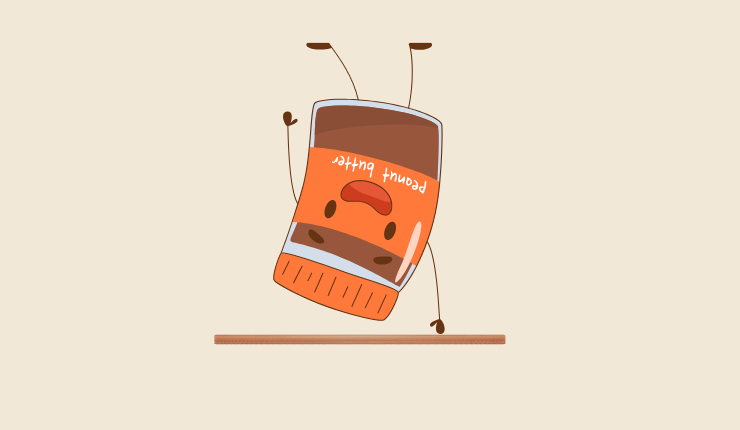
If you are storing a conventional spread, you can store it upside-down in the pantry.
Pour Out the Oil
Now, there are some people who may choose to pour out the oil to thicken the spread. I was tempted to take that step myself, but I found out that it is not recommended to pour out the oil.
Why You Should Not Pour Out the Oil
You may be wondering why you should not pour out the oil, and I feel that is a valid question.
The first reason is that it is difficult to spread your butter without the oil. There is not always enough oil at the bottom of the jar, which is why that particular portion is usually tougher to spread.
The second reason is that the oil has healthy monounsaturated fat, so pouring out the oil would remove the nutrients from your spread.
Add Some Ground Peanuts
You can also reduce the watery mixture by adding ground peanuts to your spread.
Add In Some Oil
If you want to stabilize your spread, you can always add in some oil. For homemade spreads, this can be done during or after the grinding process.
It is not a popular method because it could alter the spread’s natural taste. However, it is still an option for thickening your spread.
Add Some Xanthan Gum
Xanthan gum is used as a thickening agent in foods prepared in restaurants, but you can use it in your recipes at home. The agent keeps liquids and solids from separating, and this includes the oil and butter in your spread.
It is a safe agent to add to your spread, but you want to add it slowly because you do not need too much of it to thicken the butter. Keep in mind that Xanthan gum may have an aftertaste.
Homemade Peanut Butter? Shorten the Grinding Time
Do you enjoy making your own peanut butter at home? You can keep your spread from becoming watery by shortening the grinding time.
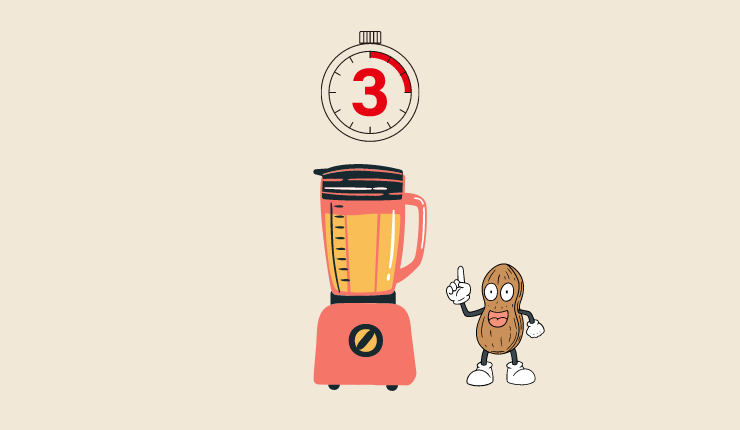
“Why is my peanut butter watery?” may not be the only kitchen-related question on your mind. You may also be wondering how to get hard candy out of your pan, and you can find my guide on this topic by clicking here.
Use an Immersion Blender
You can use an immersion blender in your spread to make an even consistency. If you do not own this tool, you may be able to purchase or borrow one for your spread.
How to Keep Your Spread From Going Watery
You learned that adding oil to your spread can keep it from getting watery. This is usually done during or after the grinding process of homemade spreads.
Another way to keep your spread from getting watery is to store it in the refrigerator. Storing it in the refrigerator is ideal in areas with high temperatures or humidity.

You can also store your spread upside-down from the beginning to keep it from getting watery.
What Kind of Spread Is Less Watery?
When choosing from conventional, natural and homemade peanut butter, you may be wondering which spread is less watery.
The answer is the conventional spread because it is produced with a longer shelf life in mind. Conventional spreads contain stabilizers, hydrogenated oils and preservatives that keep the oil and other ingredients from separating.
Natural and homemade spreads do not contain the elements that keep the oil from separating. If you need a product with a longer shelf life, choose the conventional spread.
Hydrogenated Oil in Your Spread
You may have noticed that hydrogenated oil is found in your spread. I do admit to not paying attention to the ingredients at first, but it never hurts to find out why it has been added to the butter.
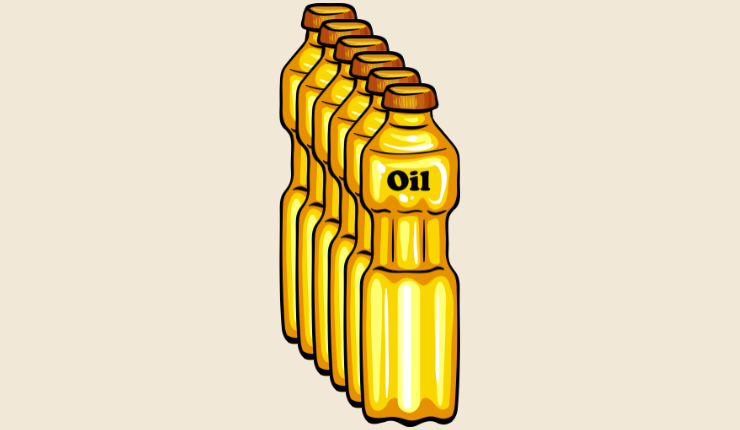
Hydrogenated oil is added to your spread to keep the oil and other ingredients from separating. This way, the oil does not rise to the top of the jar and forms that watery mixture.
Spreads that do not contain hydrogenated oil are most likely to form a watery mixture at the top of the jar.
You Can Still Use Watery Peanut Butter
The good news is that you can still use your watery spread as long as it has not expired.
If you dislike the watery texture, you can give it a good stir to mix the oil and butter before consuming or cooking with your spread.
Can I Make Peanut Butter at Home From Scratch?
You can absolutely make your own spread at home from scratch. Remember, you can prevent the oil from rising to the top of the jar by shortening the grinding time.
What is the Difference Between Homemade and Store-Bought Spread?
The difference between homemade and store-bought spreads is the ingredients. Your homemade spread may not contain stabilizers, hydrogenated oils or preservatives, and this means the oil may rise to the top of the jar over time.
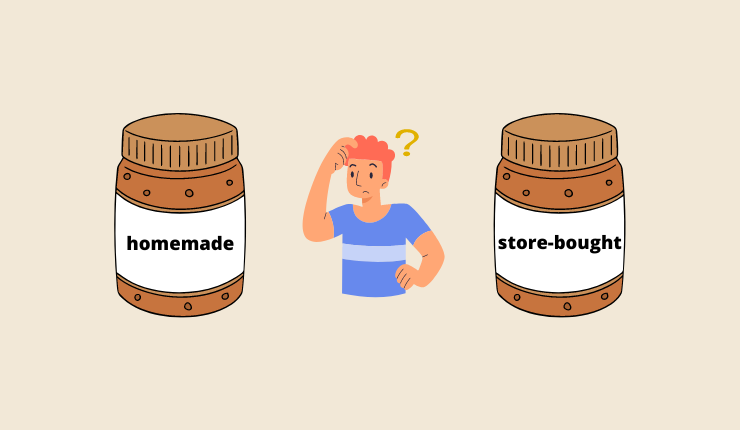
However, homemade means you know what is going into your spread. Some people also find homemade to be cheaper than store-bought.
The spread you choose is a matter of personal preference, but you are less likely to find oil at the top of a store-bought jar.
Speaking of homemade, it is always fun to try homemade dessert recipes. In this article, I explore what dessert goes with chili.
Useful Resources
It Is Okay to Open Your Jar to Find Watery Peanut Butter
It is okay to wonder, “Why is my peanut butter watery?” However, it is also okay to find oil at the top of your jar. You can easily prevent the oil from rising to the top of the jar, but you can also thicken and enjoy your favorite spread.
- Lava Rocks Vs. Fire Glass – What Is Better for a Fire Pit? - November 15, 2023
- How to Light a Propane/Gas Fire Pit with a Manual or Electronic Ignition System - November 8, 2023
- How Long Does a Propane Tank Last for a Fire Pit - October 9, 2023

